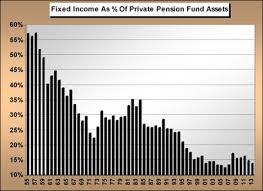Start Date:
24 March, 2025.
End Date:
26 March, 2025.
The Basel Committee on Banking Supervision consists of senior representatives of bank supervisory authorities and central banks from Argentina, Australia, Belgium, Brazil, Canada, China, France, Germany, Hong Kong SAR, India, Indonesia, Italy, Japan, Korea, Luxembourg, Mexico, the Netherlands, Russia, Saudi Arabia, Singapore, South Africa, Spain, Sweden, Switzerland, Turkey, the United Kingdom and the United States.
It usually meets at the Bank for International Settlements (BIS) in Basel, Switzerland, where its permanent Secretariat is located.
The committee carried out some reforms with the objective of the reforming and improving the banking sector’s ability to absorb shocks arising from financial and economic stress, whatever the source, thus reducing the risk of spillover from the financial sector to the real economy.
This committee sets out the rules text and timelines to implement the Basel III framework. Through its reform package, the Committee also aims to improve risk management and governance as well as strengthen banks’ transparency and disclosures.
This 3 days course has therefore been designed to avail providers of banking services, local banking institutions and other financial institutions of the details of this reform and how to carry out its implementations as well as fulfilling the compliance regime contained in the reform
Learning Objectives
At the end of this training session, participants will be able to:
- Define banking regulation, describe the primary objectives of banking regulation, and list the key global regulators in the banking industry.
- Calculate the levels of regulatory capital a bank holds and determine if this exceeds the minimum amounts set out under Basel III.
- Familiarize yourselves with the relevant risks under the Basel III Regulation and how to manage such risks
- Identify the liquidity and leverage requirements of Basel III and determine if banks are above their specified minimum levels.
- Familiarize yourselves with other impactful regulatory frameworks that affect today’s banking industry.
Course Outline
Day 1
- Introduction
- The Liquidity Coverage Ratio
- Objective of the Liquidity Coverage Ratio and use of High Quality Liquid Assets (HQLA)
- Definition of the LCR
- Stock of HQLA
- Characteristics of HQLA
- Operational requirements
- Diversification of the stock of HQLA
- Definition of HQLA
Day 2
- Total net cash outflows
- Cash outflows
- Cash inflow
- Application issues for the LCR
- Frequency of calculation and reporting
- Scope of application
- Differences in home / host liquidity requirements
- Treatment of liquidity transfer restrictions
- Currencies
Day 3
- Monitoring tools
- Contractual maturity mismatch
- Concentration of funding
- Available unencumbered assets
- LCR by significant currency
- Market-related monitoring tools
- Calculation of the cap on Level 2 assets with regard to short-term securities financing transactions
- Principles for assessing eligibility for alternative liquidity approaches
- Guidance on standards governing banks’ usage of the options for alternative liquidity approaches under LCR
- Illustrative Summary of the LCR








